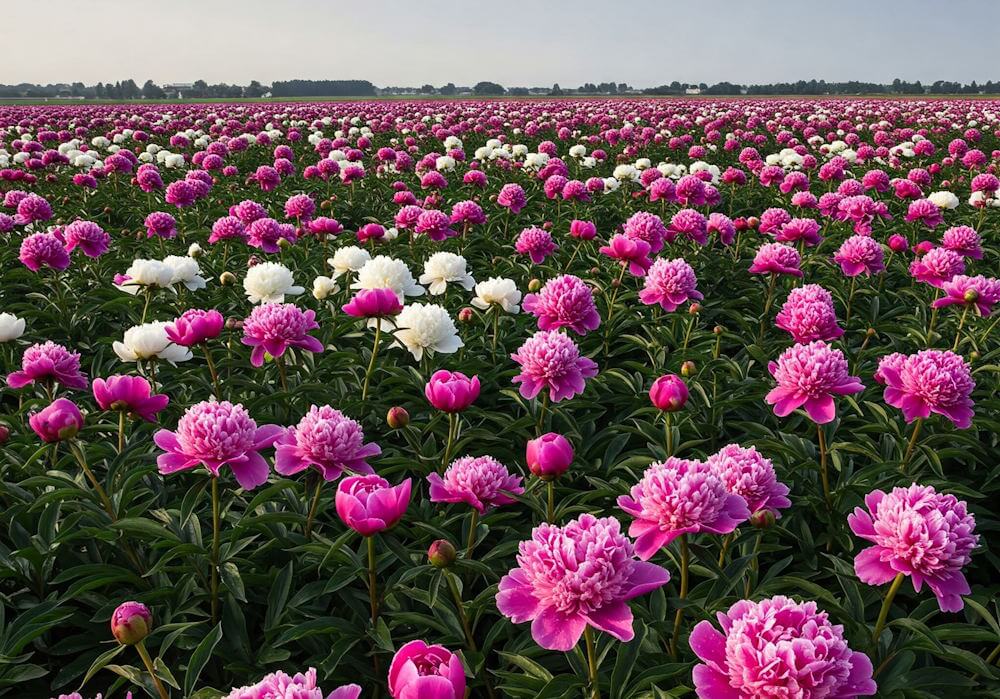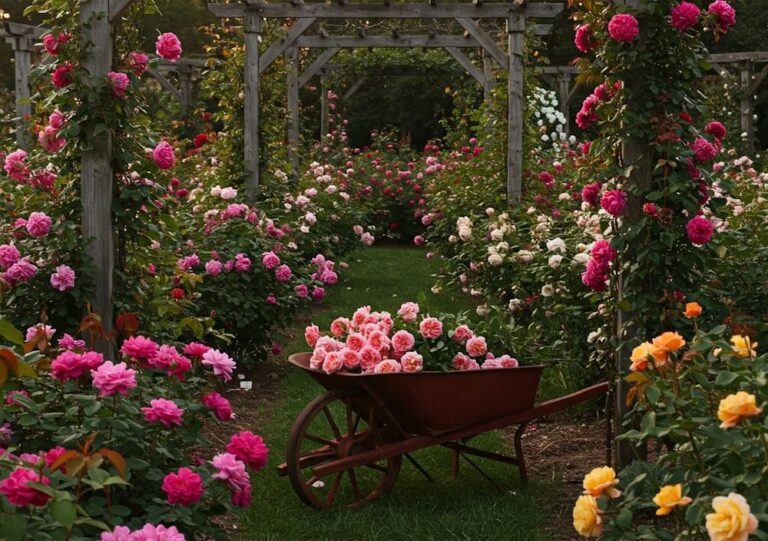Introduction to the Floral Industry
The floral industry is a vibrant and expanding sector of the global economy, characterized by its rich diversity and multifaceted segments. As of 2023, the industry has been valued at over $50 billion, with significant growth projections translating to a considerable increase in profitability opportunities for flower growers. There are several segments within the floral industry, including wholesale distribution, retail operations, and rapidly growing online sales platforms. Each segment caters to unique consumer needs, from large event planners sourcing flowers in bulk to individual consumers purchasing floral arrangements for personal gifts or home decoration.
One of the key drivers behind the industry’s growth is the rising demand for flowers across various occasions. Events such as weddings, anniversaries, and corporate gatherings consistently require floral arrangements to enhance aesthetics and convey sentiment. Additionally, there is a notable trend towards gifting flowers on special occasions such as birthdays and holidays, further propelling the need for diverse floral options. The increasing availability of online flower delivery services has made it simpler for customers to access these products, thereby expanding market reach and facilitating ease of purchase.
The floral market is also witnessing shifts in consumer preferences, with a growing inclination towards sustainably sourced and locally grown flowers. This trend not only appeals to environmentally conscious consumers but also opens revenue streams for local growers who can capitalize on fresh, local produce. Moreover, as more people invest in home improvement and décor, the integration of flowers into daily life as decorative elements has become increasingly popular. Overall, the floral industry presents numerous opportunities for aspiring entrepreneurs and seasoned growers alike looking to tap into a market that exhibits resilience and potential for significant scalability.
Understanding the Profit Margin
Growing flowers presents an array of financial opportunities, setting the stage for a profitable agricultural venture. To comprehend the profit margin in the floral industry, one must first consider the initial investment requirements. This includes costs associated with seeds, soil, and necessary infrastructure such as greenhouses or irrigation systems. Depending on the scale, these startup expenses can vary significantly, but they are essential for establishing a sustainable flower-growing operation.
Moreover, operating costs such as labor, maintenance, and marketing must also be accounted for. Labor can be particularly variable; for small-scale flower growers, family members often contribute, which can lower overall expenses, whereas larger operations may require a dedicated workforce. In addition to these initial and operational costs, growers often invest in marketing strategies to promote their products effectively, further impacting their initial cash flow.
While the upfront costs may seem daunting, the potential revenue streams in the flower-growing sector can be substantial. Flowers can be sold through various channels, including local farmers’ markets, florists, wedding planners, and online platforms. The ability to diversify into seasonal flower sales or specialty items such as dried flowers can further enhance profitability. Profit margins in the flower industry can range widely, typically falling between 20 to 40 percent, depending on the type of flowers grown and market demand.
When compared with other agricultural enterprises, flower production often yields higher profit margins. For instance, compared to staple crops like corn or wheat, the initial investment in growing flowers may be lower, yet the return per square foot can be significantly higher. The floral market’s elasticity allows growers to respond quickly to trends, enabling them to capitalize on emerging consumer preferences, thus rendering the business both dynamic and lucrative.
Selecting the Right Flower Varieties
Choosing the appropriate flower varieties is a vital component of establishing a successful flower growing business. It is not solely about personal preference; market demand and climate compatibility play significant roles in determining which flowers will thrive and yield profit. Understanding the various factors that affect the success of different flowers can greatly enhance profitability.
One of the first aspects to consider is seasonality. Certain flowers, such as tulips and daffodils, have specific blooming seasons that make them ideal for certain times of the year. Conversely, varieties like roses and dahlias can be cultivated to bloom throughout more extended periods, making them versatile options for year-round sales. Additionally, holiday-specific flowers, such as poinsettias for Christmas or lilies for Easter, can lead to increased sales during peak seasons.
Another crucial factor is the popularity of specific flower types. Roses, for instance, continuously rank as a beloved choice among consumers and tend to yield high margins. Likewise, exotic blooms, such as orchids or peonies, cater to niche markets and can command premium prices—provided that proper care and market outreach are employed. By focusing on popular and high-margin varieties, growers can significantly enhance their revenue potential.
When selecting flowers, it is also essential to consider climate compatibility. Certain flowers will flourish in specific climates, making them more suitable for particular regions. This compatibility ensures that the flowers not only grow well but also reduce the need for extensive resources, such as water and fertilizers, thus maximizing profit margins. Consulting local agricultural extensions or flower growing associations can provide valuable insights regarding region-specific varieties.
By evaluating these factors—seasonality, flower popularity, and climate adaptability—growers can make informed decisions that optimize their chances of achieving profitability in the floral industry.
Essential Growing Techniques for Flower Cultivation
Successful flower cultivation relies on a series of crucial techniques that enhance the health and yield of blooms. The first step is soil preparation. High-quality soil is fundamental for flower growth, as it directly affects nutrient availability and drainage. Conducting a soil test can help identify pH levels and nutrient deficiencies, allowing for targeted amendments. Incorporating organic matter, such as compost, enriches the soil structure and boosts fertility, leading to vigorous plant development.
Once the soil is prepared, planting techniques become paramount. Flowers should be planted at the right depth and spacing to ensure adequate airflow and sunlight. This facilitates not only healthier growth but also minimizes the risk of disease. Additionally, selecting the appropriate time for planting, based on local climate conditions, can significantly impact flower development. Utilizing native species can promote resilience and sustainability, allowing growers to cater to environmentally conscious consumers.
Pest control is another essential aspect of flower cultivation. Integrated Pest Management (IPM) strategies, which include monitoring pest populations and employing biological control methods, minimize chemical usage while controlling infestations effectively. This approach aligns with sustainable practices that appeal to today’s market, where consumers increasingly favor organic products.
Watering is equally critical; flowers require consistent moisture, especially during dry periods. Implementing a drip irrigation system can ensure that water reaches the plant roots directly while conserving resources. Adjusting watering schedules based on weather conditions and the specific needs of each flower species maximizes growth potential and reduces waste.
In conclusion, adopting these essential growing techniques—ranging from proper soil preparation and strategic planting to effective pest management and efficient watering—can significantly enhance flower cultivation profitability while appealing to a conscientious consumer base. By embracing sustainability and quality practices, growers can thrive in a competitive market.
Marketing Your Floral Business
Successfully marketing a floral business requires a blend of traditional and digital strategies tailored to not only attract but also retain customers. Building a recognizable brand begins with defining what sets your floral business apart. Consider your unique selling propositions, such as sustainable practices, exotic flower varieties, or bespoke arrangements. Create a compelling logo, consistent color schemes, and a cohesive brand message that resonates with your target audience.
In the digital age, utilizing social media platforms effectively can significantly enhance visibility. Platforms such as Instagram and Pinterest are particularly effective for flower-related businesses due to their visual nature. Regularly post high-quality images of your floral arrangements, share behind-the-scenes content of the growing process, and engage with your audience through comments and stories. Collaborations with local influencers can also expand your reach to potential customers who appreciate floral artistry.
Participation in local markets and events is another strategic avenue for promoting your floral business. Setting up stalls at farmers’ markets, craft fairs, or seasonal festivals allows you to showcase your blooms directly to the community. It also enables you to engage with customers face to face, gather immediate feedback, and even build a loyal customer base through personal interactions.
Establishing an online presence is vital for broadening your customer base. Developing a user-friendly website with an integrated e-commerce platform allows for seamless online purchasing. SEO strategies should be employed to enhance your website’s visibility in search engine results, thereby attracting more organic traffic. Consider creating a blog or a newsletter focused on floral care tips or seasonal arrangements, which can position your brand as a knowledgeable authority in the floral industry while also fostering customer relationships.
Building Relationships with Local Businesses
Establishing strong partnerships with local businesses plays a crucial role in the profitability of flower cultivation. By collaborating with florists, wedding planners, and event coordinators, growers can secure consistent orders and broaden their customer base. These relationships can facilitate not only additional sales but also enhance the visibility of the flower grower within the community.
To effectively network with local businesses, it is essential to engage with them proactively. Attending community events such as farmers’ markets, trade shows, or local festivals provides an excellent platform for flower growers to showcase their products while meeting potential partners. Bringing samples of unique blooms or offering exclusive seasonal varieties can pique interest and foster positive discussions about future collaborations.
Moreover, forming strategic alliances can take several forms. For instance, a local florist may be interested in providing a consignment option where the grower supplies flowers and the florist sells them in their shop. Alternatively, wedding planners might seek to include specific flower varieties in their floral arrangements, allowing growers to offer tailored services that align with upcoming events and client requests. Such collaborative efforts can solidify the relationship and lead to referrals, thus enhancing market presence.
Furthermore, leveraging social media platforms can amplify these efforts. By tagging local businesses in posts or collaborating on promotional campaigns, flower growers can increase their reach and gain visibility among a wider audience. Additionally, it is beneficial to maintain open lines of communication with partners, as regular updates about flower availability, new varieties, and pricing can foster trust and ensure that both parties are aligned in their pursuits.
In essence, building relationships with local businesses not only promotes mutual growth but also enhances the overall presence of the flower growing enterprise within the local economy.
Challenges in the Flower Growing Business
The flower growing industry, while potentially lucrative, presents a variety of challenges that can hinder profitability. One of the most significant issues faced by flower growers is the fluctuating market prices. These prices can vary significantly based on consumer demand, economic conditions, and regional supply. Growers must remain vigilant and informed to adapt their strategies accordingly. A common approach to mitigate price fluctuations involves diversifying the types of flowers produced, ensuring that they are well-positioned to meet varying customer preferences and market demands.
In addition to price volatility, competition from both local and international growers poses another hurdle. The accessibility of online marketing platforms means that consumers can easily find flowers from distant locations, potentially flooding the market with lower-priced options. To overcome this challenge, flower growers should focus on establishing a brand identity that highlights unique selling propositions, such as organic practices, locally sourced varieties, or exceptional customer service. Building strong relationships with wholesalers and retailers can create a competitive edge, allowing for more stable pricing and dedicated customer bases.
Seasonal demand also plays a crucial role in the flower industry. Certain flowers have specific peak seasons, and growers must strategically plan their planting schedules to align with these periods. Employing techniques like extending the growing season through greenhouses or utilizing seasonally available flowers can help maintain a steady flow of products throughout the year. Weather conditions pose another risk; unexpected frost or drought can devastate crops. Implementing protective measures such as irrigation systems, frost blankets, and choosing robust flower varieties can significantly reduce the potential negative impact of adverse weather.
Real-Life Success Stories
The flower industry is a vibrant realm filled with unique stories of individuals who have transformed their passion for blooms into lucrative businesses. These success narratives underscore the diverse pathways one can take in the journey toward establishing a profitable flower enterprise.
One notable case is that of Sarah, a former marketing executive who transitioned to flower farming. After participating in a floral workshop, she discovered her affinity for creating bespoke arrangements. Motivated by this newfound passion, Sarah invested in a small plot of land to cultivate organic flowers, emphasizing the importance of sustainability. She initially faced challenges sourcing suitable seeds and navigating local regulations, but her commitment to quality and eco-friendly practices attracted a niche clientele. Within two years, she expanded her offerings to include wedding bouquets, corporate events, and subscription services, significantly boosting her profits while fostering a loyal customer base.
Another inspiring example is the McCoy family, who have been cultivating flowers for generations. This multi-generational business has adapted to changing market demands by diversifying their product range. While initially focused on traditional floral varieties, they have successfully incorporated unique and exotic flowers to cater to a broader customer demographic. By leveraging social media and attending local farmer’s markets, the McCoys have established a brand that emphasizes both heritage and innovation. Their story highlights the significance of adaptability and market responsiveness in achieving business growth.
Lastly, we meet Greg, an urban flower grower who utilizes innovative methods such as vertical farming and hydroponics to maximize space in his city-based facility. His approach not only reduces the footprint of traditional farming but also caters to a growing demand for locally sourced flowers. Greg’s success illustrates that creative solutions and modern cultivation techniques can lead to significant profitability in this sector.
These stories exemplify how diversity in approaches, creativity, and resilience can pave the way for success within the flower growing industry. They inspire others to explore the multifaceted opportunities that this field offers.
Getting Started: First Steps to Your Flower Business
Embarking on a journey in the floral industry requires strategic planning and a clear vision. The first step aspiring flower growers should take is to craft a comprehensive business plan. This plan will serve as a roadmap, detailing market analysis, competition, customer demographics, and pricing strategies. It is essential to outline not only the short-term objectives but also long-term goals to guide the growth of your flower business.
Securing funding is another critical step in launching your floral venture. New flower growers may consider various financing options, including personal savings, loans, or even crowdfunding, depending on the business model adopted. Researching grants specifically aimed at agriculture or small businesses can also yield fruitful resources for prospective floral entrepreneurs seeking capital to invest in their operations.
Once your business plan is in place and funding is secured, sourcing high-quality supplies becomes paramount. Establishing relationships with reliable suppliers will not only ensure the freshness of your flowers but also contribute positively to your profitability. It’s advisable to explore local wholesalers or farms, as these sources typically offer competitive prices and allow for fresher inventory. Furthermore, stocking tools for cultivation and marketing materials is equally important as you shape your brand identity.
As you advance, consider the significance of sustainability in your flower business. Implementing eco-friendly practices, such as using organic fertilizers and biodegradable packaging, can resonate with environmentally conscious consumers and enhance your business appeal. Lastly, staying informed about industry trends and networking with fellow growers can provide valuable insights and inspiration.
Taking the plunge into the floral industry can be both fulfilling and profitable. By following these foundational steps—crafting a solid business plan, securing necessary funding, sourcing quality supplies, and embracing sustainability—you set the stage for a successful flower business. As you begin this exciting journey, remember that thorough preparation and dedication will pave the way for your eventual success in cultivating blooms for bucks.





